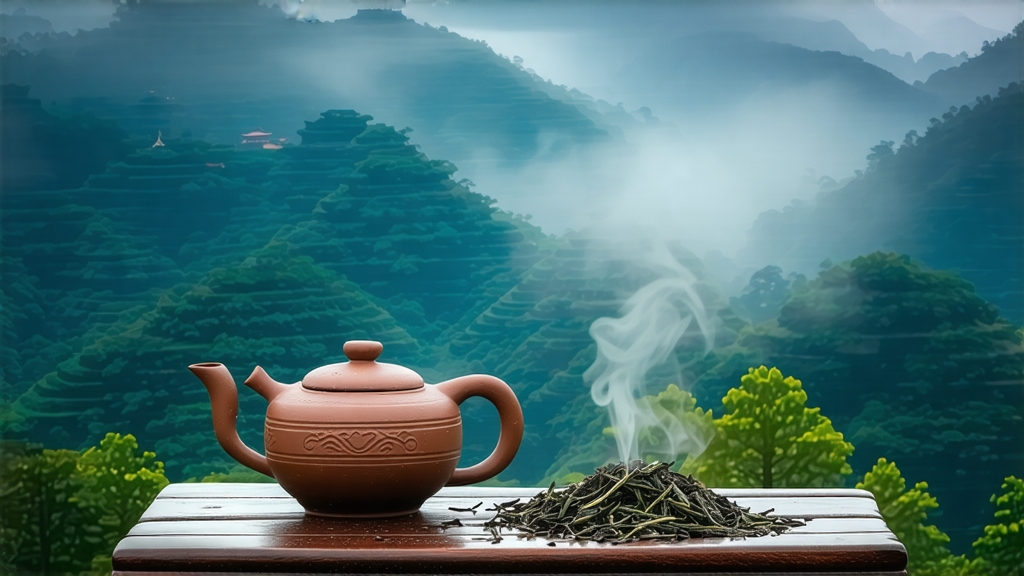
When European tea caravans first reached London in the late 1600s, the chests labeled “Bohea” carried a dark, slender leaf that brewed a ruddy liquor so fragrant it was mistaken for wine. That leaf was Lapsang Souchong, the earliest black tea ever created and the prototype for every subsequent red-black tea in the world. Today, while global palates chase muscatel Darjeelings or malty Assams, the original smoked black tea still unfurls its pine-ringed soul in the high bamboo forests of Tongmu, a protected enclave tucked deep inside China’s Wuyi Mountains of northern Fujian. To understand Lapsang Souchong is to witness the moment tea stepped beyond green, embraced fire, and learned to speak the language of smoke.
History: From Ming-Era Accident to London’s Luxury
Legend places the birth of Lapsang Souchong during the late Ming dynasty, around 1646, when an army unit passing through Tongmu commandeered tea factories for barracks. To dry the piled leaves quickly before the soldiers returned, workers spread them over pine fires. The resulting tea, infused with resinous smoke, was rushed to market and unexpectedly adored by Dutch traders who carried it to Europe. By the 1660s it had become Catherine of Braganza’s wedding dowry to Charles II, cementing its status as the “tea of kings” and fixing the British taste for strong, dark infusions. The name itself encodes provenance: “Souchong” refers to the fourth and fifth leaves—larger, tougher, and more aromatic than the prized buds—while “Lapsang” derives from the Fuzhou dialect “La” (pine) and “sang” (wood), a nod to the smoking process. For three centuries, every black tea that left China did so in the stylistic shadow of this Wuyi original.
Terroir: Why Only Tongmu Can Birth Authenticity
Tongmu lies at 27° N latitude, cupped by 1,200-metre granite peaks that trap cool, moist air. The average annual fog cover exceeds 220 days, slowing photosynthesis and concentrating amino acids in the leaves. Soils are acidic, rich in quartz and iron, and drained by the Jiuqu (Nine-Bend) Stream whose mineral-laden mist feeds the tea bushes. Crucially, the village sits inside a national nature reserve; pesticides are banned, and only residents of the core 64 km² may harvest. These conditions create a micro-flora—yeasts, lichens, and pine pollen—that inoculate withered leaves and contribute the sweet, longan-fruit note prized in top-grade Lapsang. Outside this polygon, even identical cultivars and smoking techniques yield a harsher, tar-heavy cup.
Cultivars: Two Genetic Lines, Two Flavor Universes
- Xiao Zhong (Small Leaf): A local landrace of Camellia sinensis var. sinensis, with leaves barely 4 cm long. It produces the classic “fruit-sweet” style whose smoke lingers like incense rather than barbecue.
- Cai Cha (Mixed Color): A broader-leafed bush yielding higher polyphenols and maltol, favored for export grades that can stand up to milk and sugar.
Recent clonal selections such as Wuyi #8 marry high catechin content with rapid withering, but connoisseurs still chase old-garden seed-grown plants whose roots intertwine with mountain pine.
Craft: The Eight Stages of Smoke and Fire
- Plucking: Dawn pick of one bud plus two or three leaves, ideally after nightly dew has evaporated but before the sun grows hot.
- Solar Withering: Leaves are laid on bamboo screens angled toward the rising sun for 30–45 minutes, softening cell walls and initiating enzymatic oxidation.
- Indoor Withering: Moved to the second floor of wooden lofts, leaves rest 3–4 hours while pine logs smolder below; warm air (28 °C) wafts upward, reducing moisture to 60 %.
- Rolling: Traditionally by hand on rattan trays, 20 minutes of light pressure ruptures cells and releases juices, turning leaves dark mahogany.
- Oxidation: Rolled leaves are heaped in pine-wood crates covered with wet cloths. For 2–3 hours the tea “sweats,” turning from green-brown to copper-red as catechins convert to thea